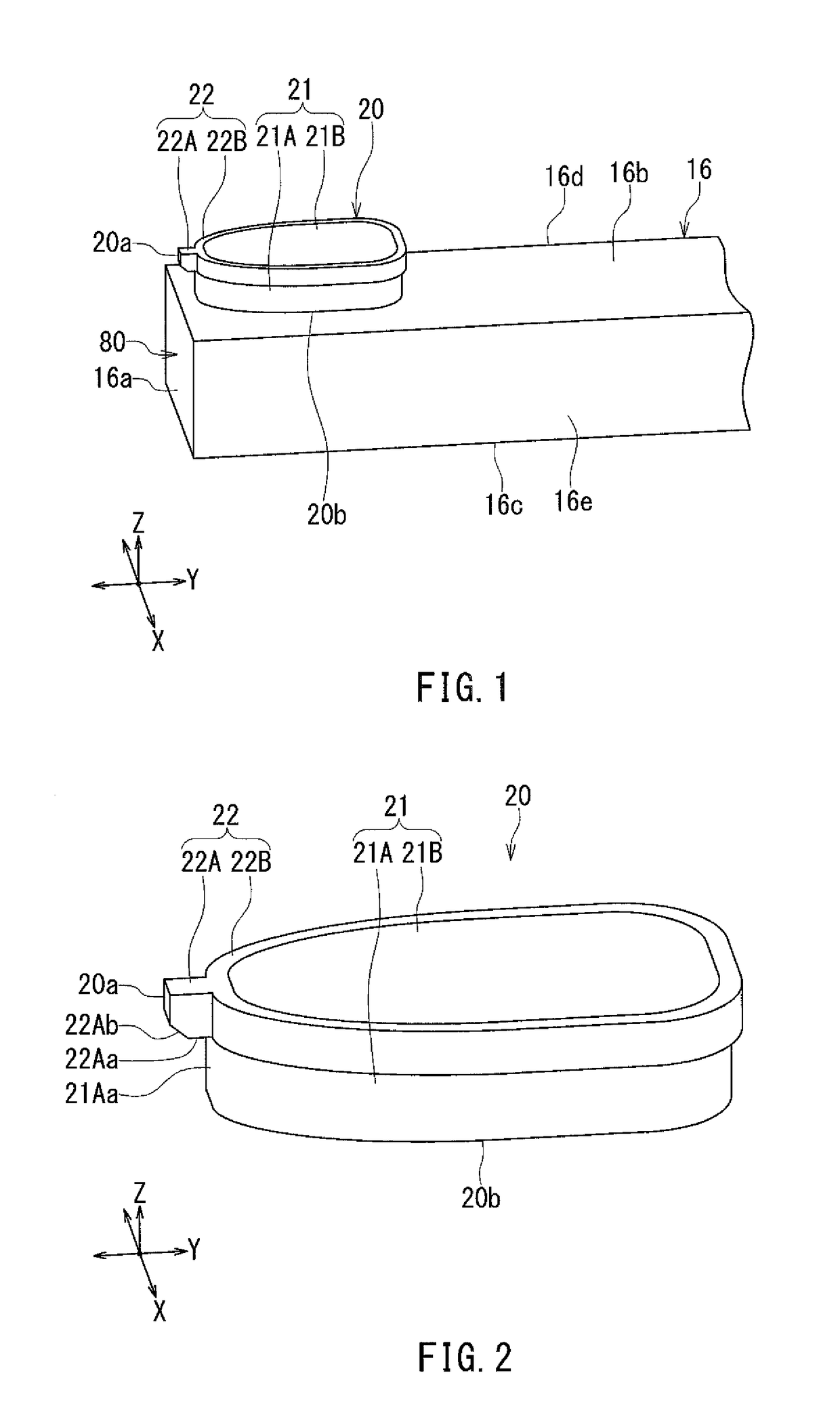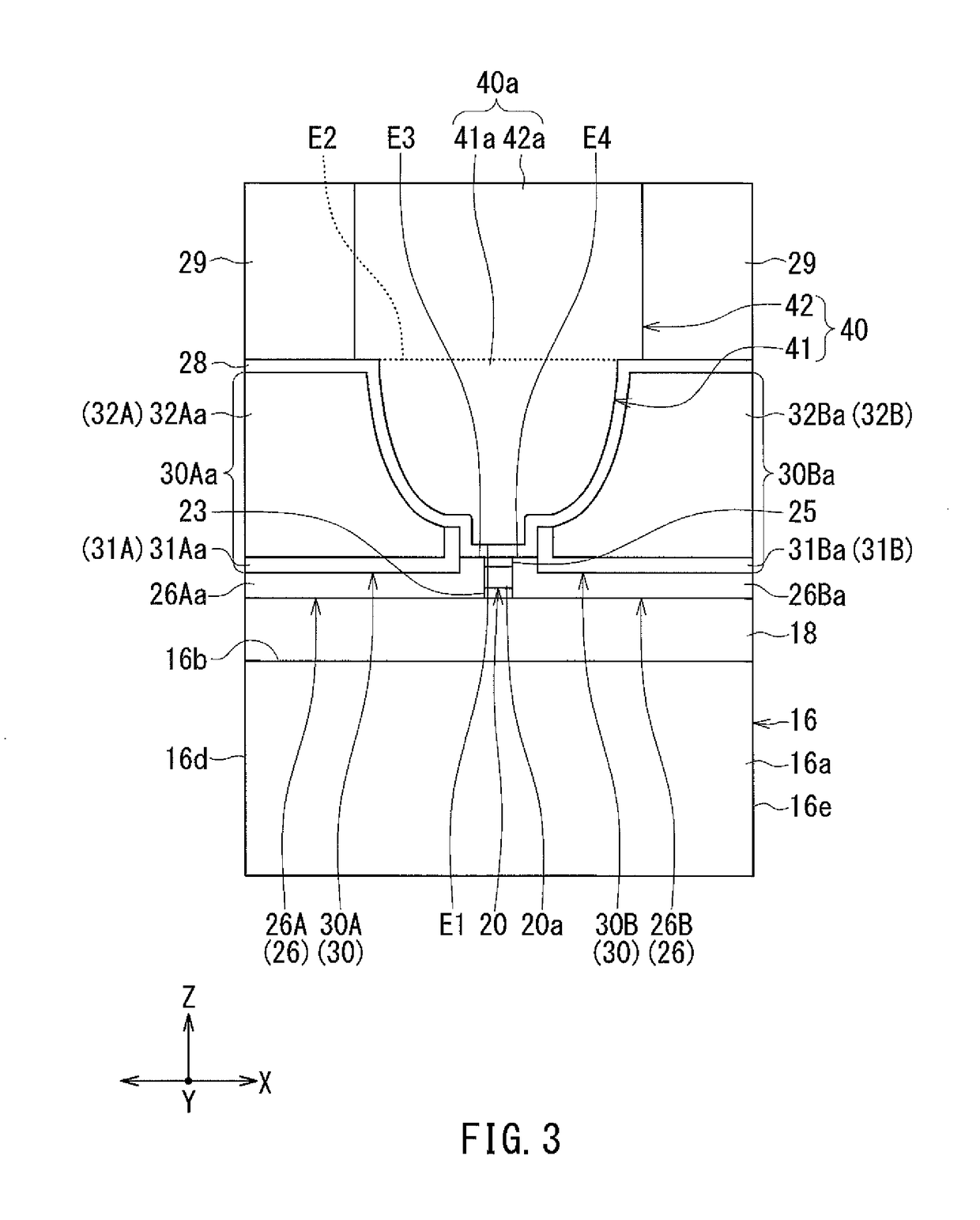Thermally-assisted magnetic recording head including a main pole and a plasmon generator
- Summary
- Abstract
- Description
- Claims
- Application Information
AI Technical Summary
Benefits of technology
Problems solved by technology
Method used
Image
Examples
first embodiment
[0078]Preferred embodiments of the present invention will now be described in detail with reference to the drawings. First, reference is made to FIG. 3 to FIG. 9 to describe the configuration of a thermally-assisted magnetic recording head according to a first embodiment of the invention. FIG. 3 is a front view showing the main part of the thermally-assisted magnetic recording head. FIG. 4 is a cross-sectional view showing the main part of the thermally-assisted magnetic recording head. FIG. 5 is a plan view showing a main pole, a surrounding layer, and a first heat sink. FIG. 6 is a cross-sectional view showing the configuration of the thermally-assisted magnetic recording head. FIG. 7 is a front view showing the medium facing surface of the thermally-assisted magnetic recording head. FIG. 8 is a plan view showing a first layer of a coil of the present embodiment. FIG. 9 is a plan view showing a second layer of the coil of the present embodiment.
[0079]The thermally-assisted magneti...
second embodiment
[0182]A thermally-assisted magnetic recording head according to a second embodiment of the invention will now be described with reference to FIG. 24 and FIG. 25. FIG. 24 is a perspective view showing a plasmon generator of the present embodiment. FIG. 25 is a cross-sectional view showing the main part of the thermally-assisted magnetic recording head according to the present embodiment.
[0183]The thermally-assisted magnetic recording head according to the present embodiment is configured differently than in the first embodiment in the following ways. In the present embodiment, the dielectric layer 23 of the first embodiment is omitted. Further, the narrow portion 22A of the second material portion 22 of the plasmon generator 20 does not have the connecting surface 22Ab described in relation to the first embodiment. The bottom surface 22Aa of the narrow portion 22A is connected to the near-field light generating surface 20a. Further, the front end portion 21Aa of the first layer porti...
third embodiment
[0186]A thermally-assisted magnetic recording head according to a third embodiment of the invention will now be described with reference to FIG. 26 and FIG. 27. FIG. 26 is a perspective view showing a plasmon generator of the present embodiment. FIG. 27 is a cross-sectional view showing the main part of the thermally-assisted magnetic recording head according to the present embodiment.
[0187]The thermally-assisted magnetic recording head according to the present embodiment is configured differently than in the second embodiment in the following ways. In the present embodiment, the entirety of the first material portion 21 of the plasmon generator 20 lies inside the ring portion 22B of the first material portion 22. In the present embodiment, the first layer portion 21A and the second layer portion 21B are omitted from the first material portion 21. Further, the cladding layer 18 does not have the receiving section 18a. The entirety of the plasmon generator 20 lies on the cladding lay...
PUM
 Login to View More
Login to View More Abstract
Description
Claims
Application Information
 Login to View More
Login to View More - R&D
- Intellectual Property
- Life Sciences
- Materials
- Tech Scout
- Unparalleled Data Quality
- Higher Quality Content
- 60% Fewer Hallucinations
Browse by: Latest US Patents, China's latest patents, Technical Efficacy Thesaurus, Application Domain, Technology Topic, Popular Technical Reports.
© 2025 PatSnap. All rights reserved.Legal|Privacy policy|Modern Slavery Act Transparency Statement|Sitemap|About US| Contact US: help@patsnap.com



